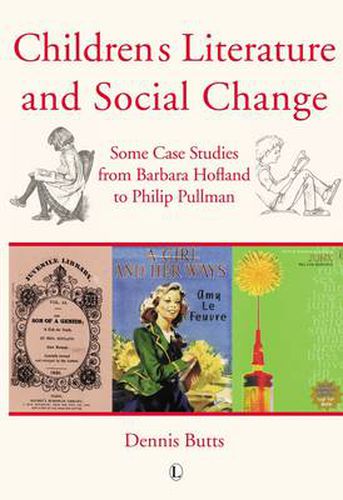Readings Newsletter
Become a Readings Member to make your shopping experience even easier.
Sign in or sign up for free!
You’re not far away from qualifying for FREE standard shipping within Australia
You’ve qualified for FREE standard shipping within Australia
The cart is loading…






While there are many books about children’s literature, few discuss it within its social context or investigate the ways writers reflect or react to change in society. Dennis Butts explores how shifting attitudes and historical upheavals from the 1840s onwards affected and continue to affect books written for younger audiences. Spanning from the industrial revolution to the sexual revolution, this title tells about the impact these external events have had on writers as diverse as moral storyteller Barbara Hofland and the controversial Melvin Burgess. G.A. Henty, Robert Louis Stevenson and even Philip Pullman are included in the discussion, as Butts identifies commonalities between books of the past and present, arguing that trends shown in most of the early children’s literature are being displayed again now, albeit in a more subtle manner. This book will appeal to undergraduate students attending complementary courses in children’s literature during their degree in English Literature or Cultural Studies. It will also be of use to postgraduate research students working in the field of Children’s Literature.
$9.00 standard shipping within Australia
FREE standard shipping within Australia for orders over $100.00
Express & International shipping calculated at checkout
While there are many books about children’s literature, few discuss it within its social context or investigate the ways writers reflect or react to change in society. Dennis Butts explores how shifting attitudes and historical upheavals from the 1840s onwards affected and continue to affect books written for younger audiences. Spanning from the industrial revolution to the sexual revolution, this title tells about the impact these external events have had on writers as diverse as moral storyteller Barbara Hofland and the controversial Melvin Burgess. G.A. Henty, Robert Louis Stevenson and even Philip Pullman are included in the discussion, as Butts identifies commonalities between books of the past and present, arguing that trends shown in most of the early children’s literature are being displayed again now, albeit in a more subtle manner. This book will appeal to undergraduate students attending complementary courses in children’s literature during their degree in English Literature or Cultural Studies. It will also be of use to postgraduate research students working in the field of Children’s Literature.